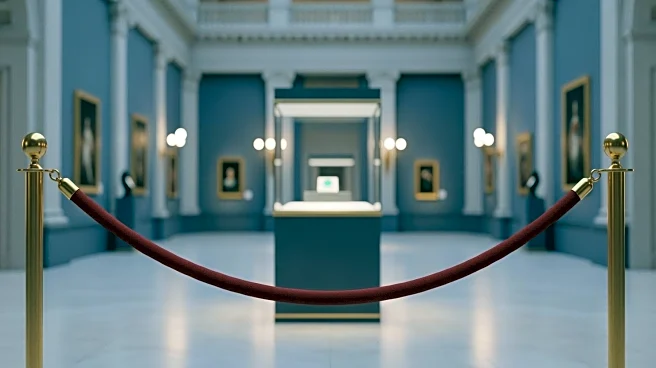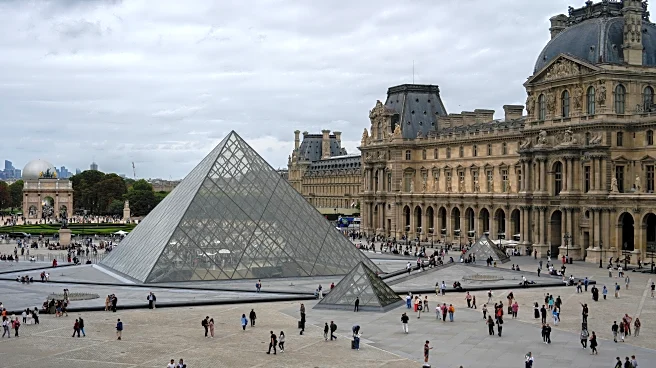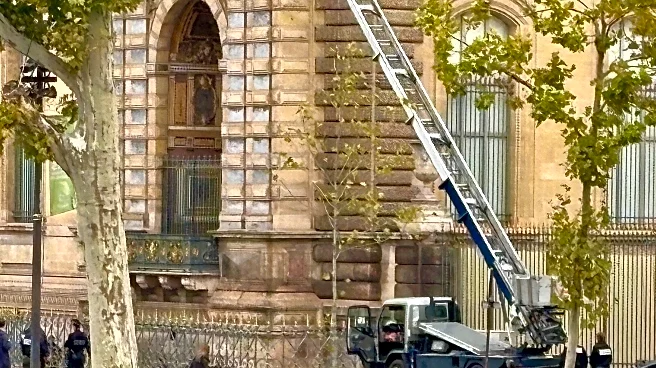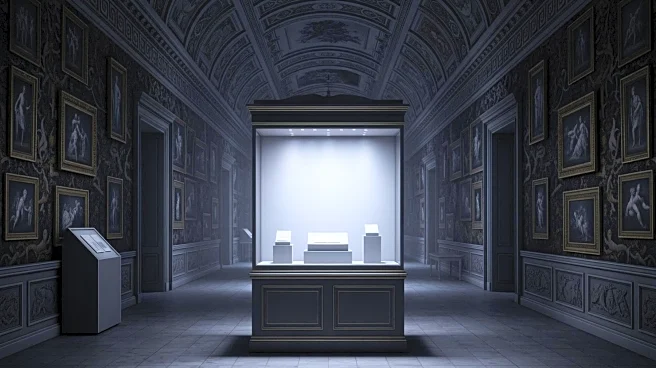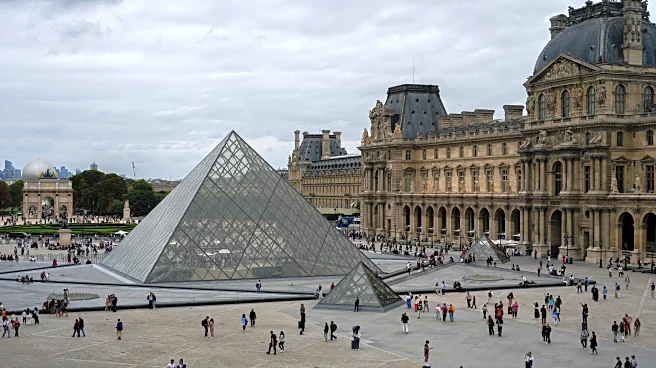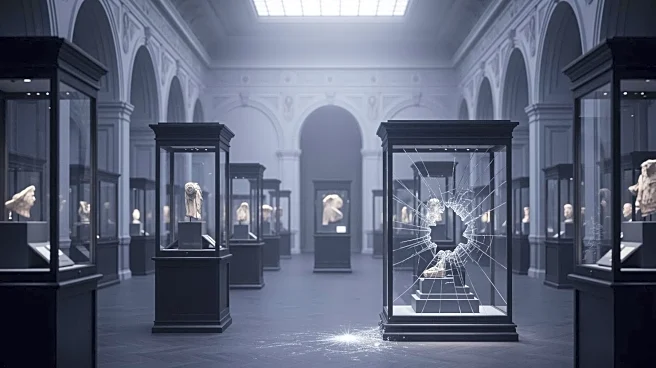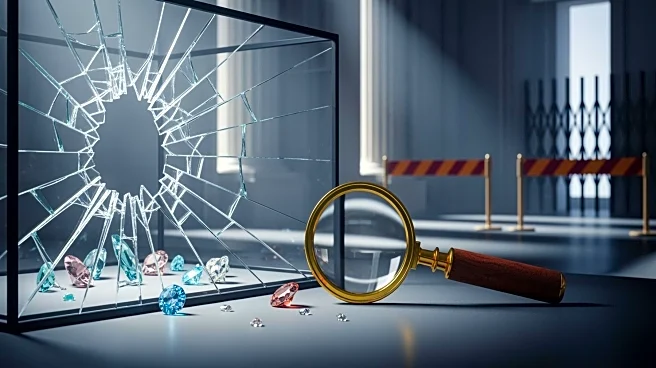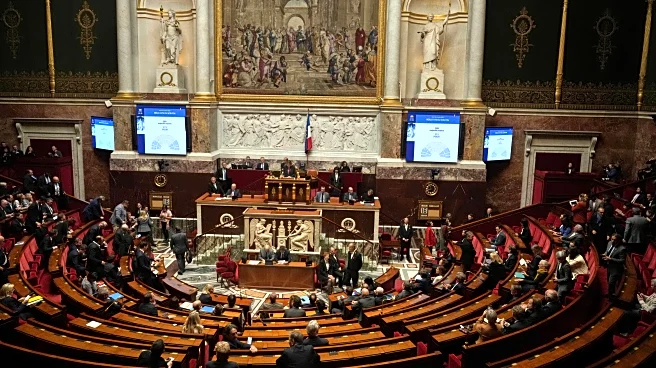What's Happening?
The Louvre Museum in Paris was temporarily closed following a significant theft involving jewels of 'inestimable value.' According to France's Interior Ministry, the robbery occurred on Sunday morning
when several intruders used a basket lift to break into the museum. They forced open a window, smashed display cases, and escaped with jewels from the Galerie d’Apollon, which houses a selection of the French Crown Jewels. The operation lasted approximately seven minutes, and the thieves fled on two-wheelers. Culture Minister Rachida Dati and Interior Minister Laurent Nuñez were present at the scene, overseeing the investigation. The museum cited 'exceptional reasons' for the closure, and police sealed off the area, evacuating visitors and closing nearby streets. Forensic work is underway to compile a precise inventory of the stolen items, which are believed to include pieces from the jewelry collection of Napoleon and the Empress.
Why It's Important?
The theft at the Louvre Museum underscores the vulnerability of even the most secure cultural institutions to well-planned criminal activities. The stolen jewels, which hold significant historical and patrimonial value, represent a loss not only to the museum but also to cultural heritage. This incident may prompt museums worldwide to reassess their security measures, especially during construction or renovation periods when vulnerabilities might be exploited. The theft could also impact tourism, as the Louvre is a major attraction, drawing up to 30,000 visitors a day. The closure and ongoing investigation may deter visitors, affecting local businesses and the broader economy reliant on tourism.
What's Next?
The investigation into the theft is ongoing, with forensic teams working to identify the stolen items and track down the perpetrators. Authorities are likely to enhance security measures at the Louvre and other museums to prevent future incidents. The museum's leadership, along with government officials, may consider implementing advanced surveillance technologies and stricter access controls. Additionally, the cultural sector may engage in discussions about safeguarding valuable artifacts, potentially leading to new policies or international cooperation to protect cultural heritage.
Beyond the Headlines
This theft highlights the ethical and legal challenges in protecting cultural heritage. It raises questions about the responsibility of museums to ensure the security of artifacts and the role of governments in supporting these efforts. The incident may also spark debates on the balance between public access to cultural treasures and the need for stringent security measures. Long-term, this event could influence how museums worldwide approach the display and protection of valuable items, potentially leading to shifts in exhibition practices and security protocols.
